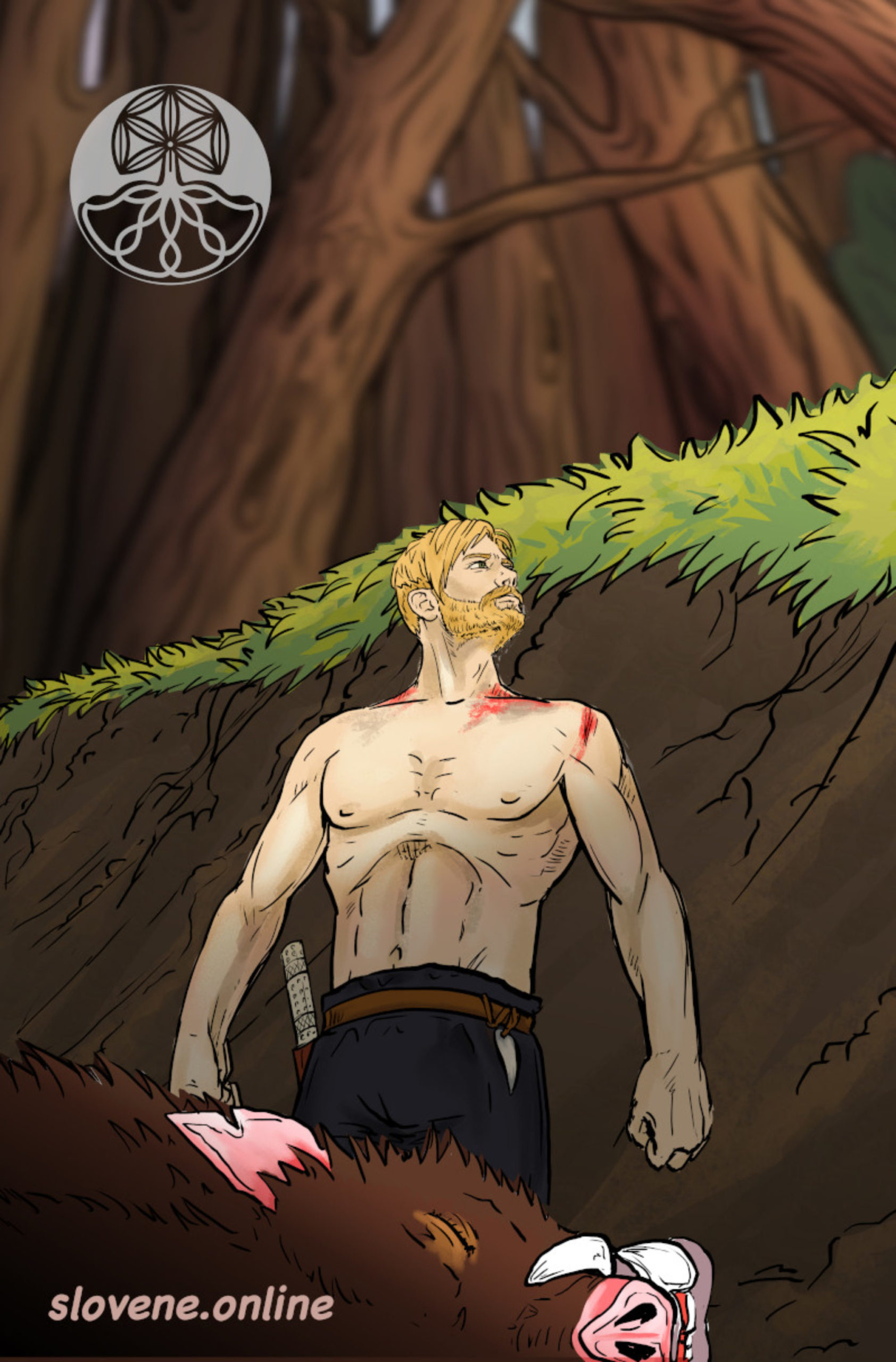In Slavic beliefs, Polevik is a hostile creature but sometimes he helps humans. Novgorod people believed that Polevik could warn field workers about danger – for example, drive them out of the field before an approaching thunderstorm.
ꏍ
That is why people always tried to please Polevik. In Novgorod, when pasturing cows in the meadowland, people bowed to Polevik and said: “Field father, field mother with little children, take my cattle, give it water and feed it”. And when cattle got lost, people would take bread and three coins, stand on the road and say: “Master of the field, I will give you bread and a gold treasure, and you bring my hog home.”
ꏍ
In the Oryol region of Russia, on certain holidays at night, a couple of eggs and an old rooster stolen from neighbors were sacrificed to Polevik in the field. It was believed that, without a sacrifice, Polevik would get angry and destroy all the bread in the field. And in the Yaroslavl region, at the end of the harvest people left several uncut bread spikes as an offering to Polevik.
ꏍ
Why do you think they sacrificed not their own, but the neighbor’s rooster? 😉
Artist: https://www.deviantart.com/natale777
ꏍ
More interesting facts can be found in: “Slavic Antiquities” – encyclopedic dictionary in 5 volumes by Institute for Slavic Studies of the Russian Academy of Sciences.
ꏍ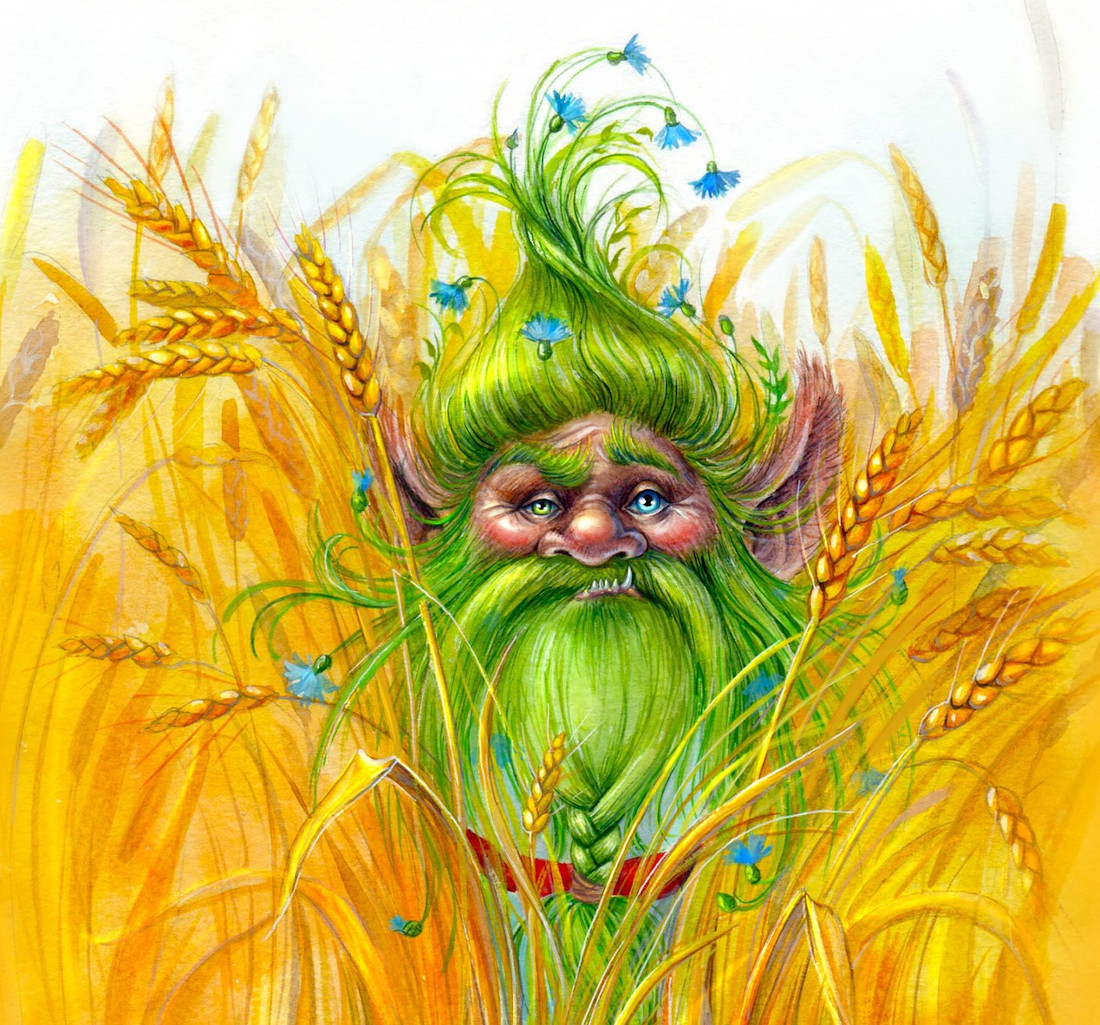
Polevik can be evil and grumpy
Polevik in the beliefs of the Slavs is an evil, grumpy and unpredictable spirit. He scares people with his sudden appearance, wild echo, clapping his hands or whistling, and also takes the form of a monstrous shadow that chases people. Russians and Ukrainians believed that Polevik makes people to go astray (especially children who go to the fields for flowers), “leads” them through the fields and lures them into a swamp, or makes fun of drunken plowmen. He can drive an entire wedding procession into a river. Polevik could pester to a traveler with questions: “How are you? Where are you going? Why?”, which would knock people off their way.
ꏍ
Belarusians in Vitebsk region believed that, if Polevik got angry – he tormented the animals grazing in the field by sending flies and horseflies on them. Or he could trample down the crops, or twist the plants, or send damaging insects and harmful winds on them. He could also deflect the rain from and bring the cattle to the crop fields. In Ukrainian beliefs, Polevik himself sows weeds in the fields. Russians of Smolensk region had a saying about the cause of the cattle illness: “Polevik flew into the ear”. Russians also believed that even Polevik’s children (‘Mezhevichki’) run along the field borders, catching birds and strangling people who dare to lie there.
ꏍ
What a family! I wonder what his wife is capable of? 😉
ꏍ
To be continued…
Artist: Ivan Tsygankov
ꏍ
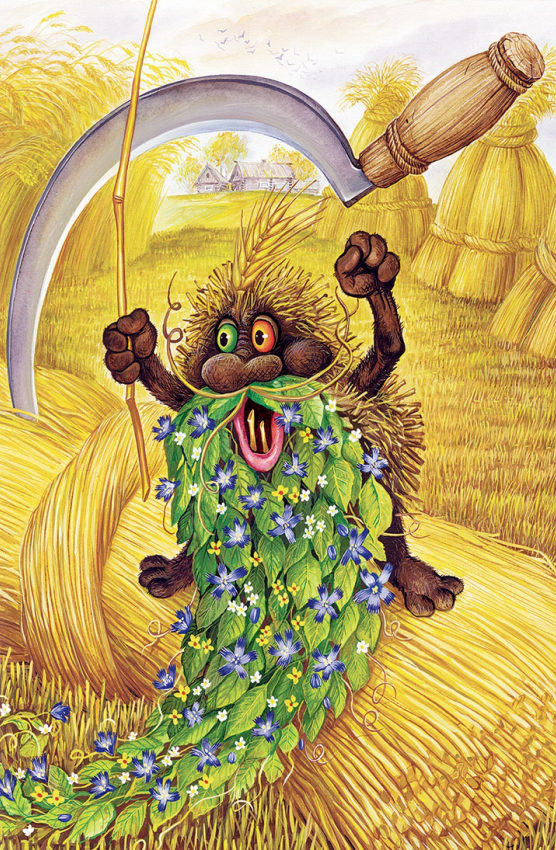
Polevik – the appearance
In Southern Russian beliefs, Polevik is the personification of the field – naked, black as the soil, eyes of different colors, long green grass instead of hair, a beard of stalks, and he himself is a little ugly old man.
ꏍ
In the northern Russia regions, Polevik was imagined as a young man with very long legs. He is covered with fiery hair, has bulging eyes, horns and a long tail. Polevik uses his tail’s bushy tip to raise dust from the ground if he does not want to be seen.
ꏍ
Eastern Ukrainians believed that Polevik is covered with fur, has small horns and ears like a calf. But he can only be seen while asleep. In Kharkov region people imagined him as white as snow with a white beard. In Novgorod region in Russia – that he has grey hair. In Vologda region – that he simply dressed in white clothing, and that he can run very fast. So fast, that he seems to a person like a flashed spark.
ꏍ
Polevik can also change appearance: during the day he looks like a little man, and at night – like a flickering light. He can change his height, turn into a young or old person, or even a familiar neighbor.
ꏍ
So how can one recognize Polevik in a neighbor – any thoughts? 😉
ꏍ
To be continued…
Artist: Anastasiya Lysenko https://www.instagram.com/sstu.arto/
ꏍ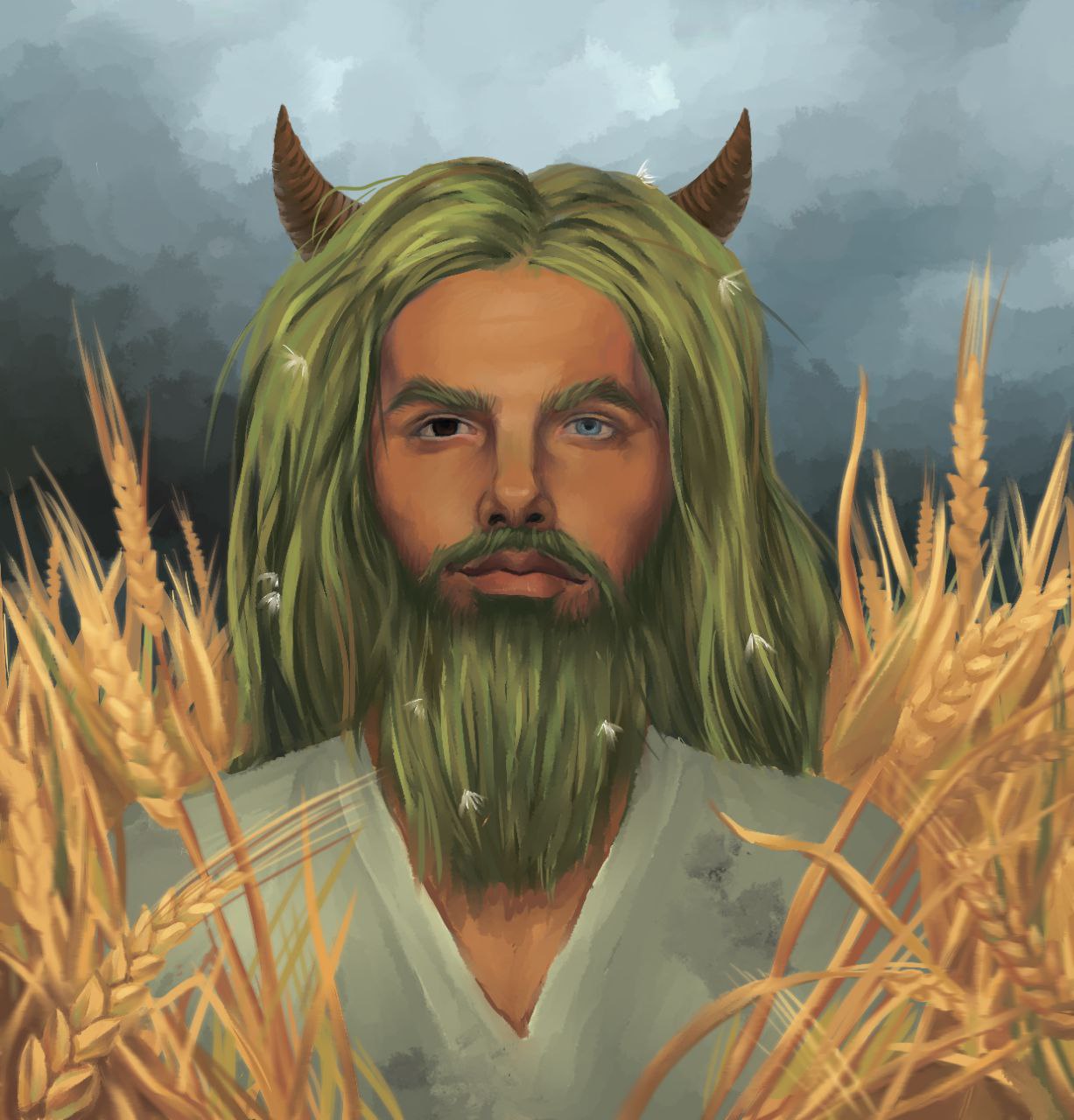
Polevik in Slavic tradition
Polevik is the mythological “master” of the field among the Slavs. He protects the fields and controls their productivity, vegetation and grain harvest, as well as the well-being of cattle grazing in the field.
ꏍ
In various regions, Polevik’s functions are slightly different. Some people believed that he observes grasses and cereal crops and takes care of their fertility. Some – that he guards the grain fields. Some even believed that he was a guardian of the treasures hidden in the field. In the north of Russia, it was believed that each field has its own Polevik.
ꏍ
Polevik was also guarding the field boundaries. At midnight he galloped on the horse or in a cart along the field boundary and could crush or take with him those who were on the way. Therefore, it was forbidden to sleep on the borders of the fields, especially at night, so that Polevik or his children (‘mezhevichki’) would not strangle a person.
ꏍ
The appearance of the Polevik was accompanied by a strong, gusty wind or a whirlwind. In Novgorod, it was believed that Polevik himself is the cause of the wind when he claps his hands, whistles or blows.
ꏍ
What other Slavic field defenders do you know?
ꏍ
Artist: Ivan Bilibin
Colored version: Photo Researchers
ꏍ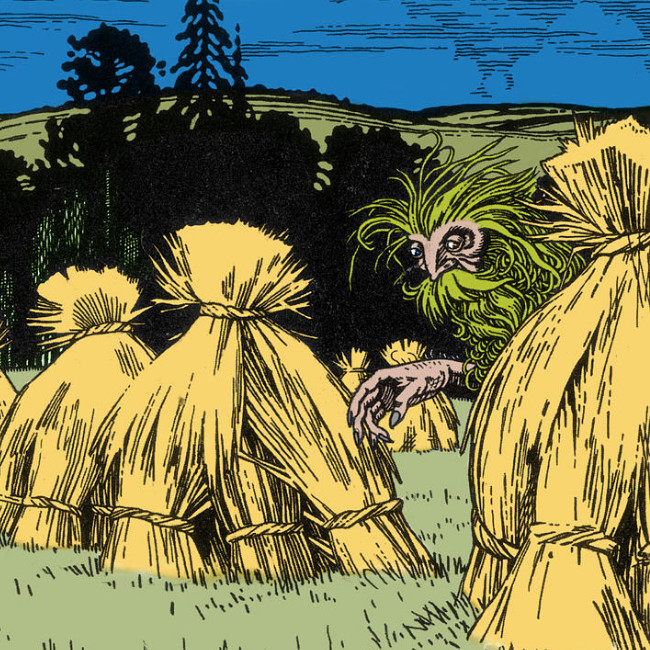
Lapti (bast shoes) and evil spirits
Lapti (bast shoes) and evil spirits.
ꏍ
Bast shoes are often mentioned in connection to mythological creatures. Leshy and Polevik (field spirit) are often portrayed wearing lapti. Weaving bast shoes is a favorite activity of evil characters, and Vodyanoi in particular.
ꏍ
Bast shoes were also used to appease evil spirits. Vologda fishermen and millers threw bast shoes into the water to get help from Vodyanoi. If the cattle were lost, the peasants of the Smolensk region appealed to Rusalki. They went to the forest and brought with them bast shoes, footcloth, bread & salt and left it in a sack on a tree with the words: “Please, Rusalki, accept my gift, and return the cattle!”. In the Kostroma region, when moving to a new house, the owners went to the old yard with one bast shoe and invited Domovoy to go with them in that shoe. In the Vladimir region, people supplied Domovoy with shoes, by hanging old worn “little lapti” in the yard.
ꏍ
The need for shoes for Domovoy is understandable. But what would Rusalki do with them? 😉
ꏍ
More interesting facts can be found in: “Slavic Antiquities” – encyclopedic dictionary in 5 volumes by Institute for Slavic Studies of the Russian Academy of Sciences.
ꏍ

